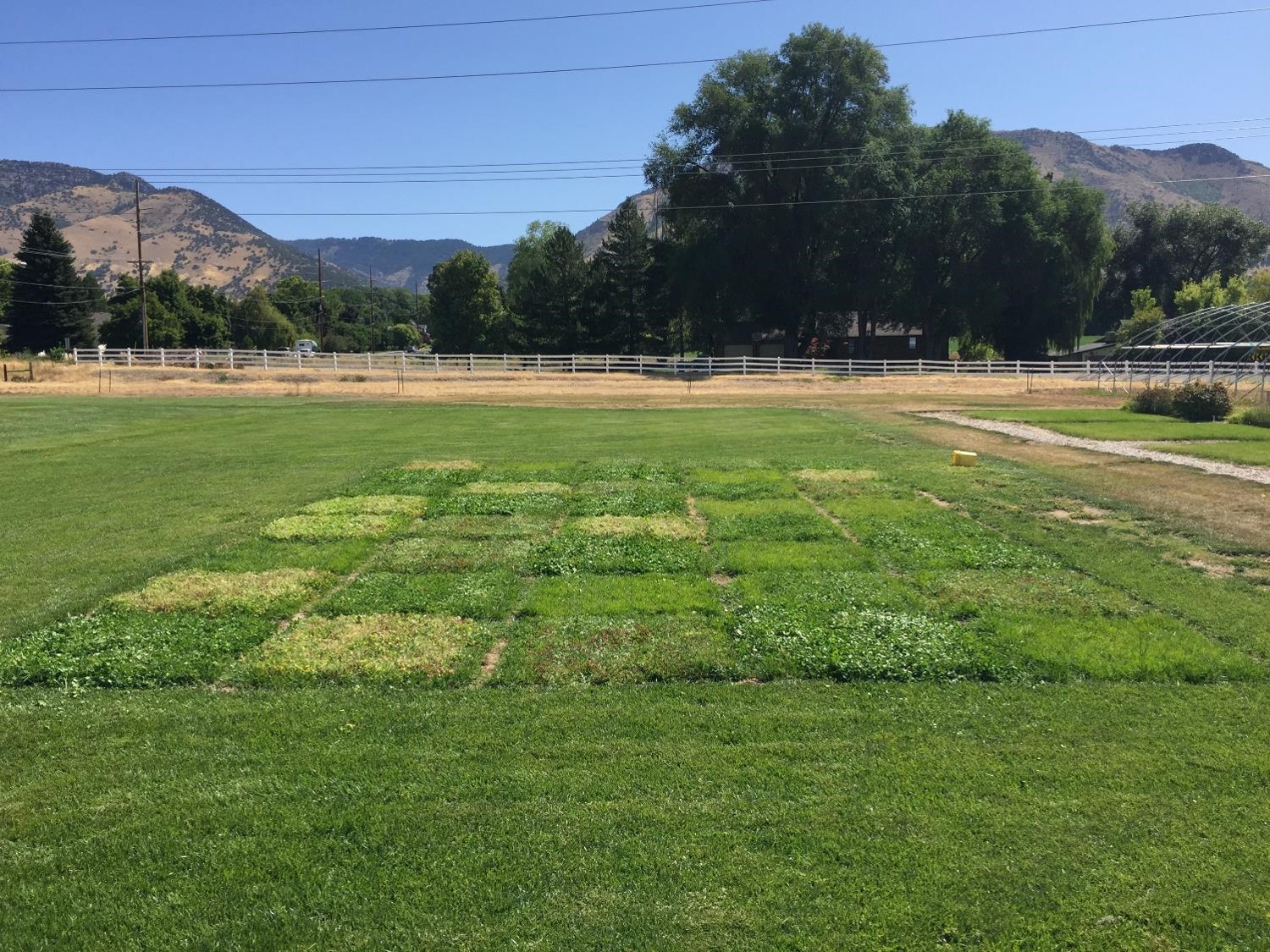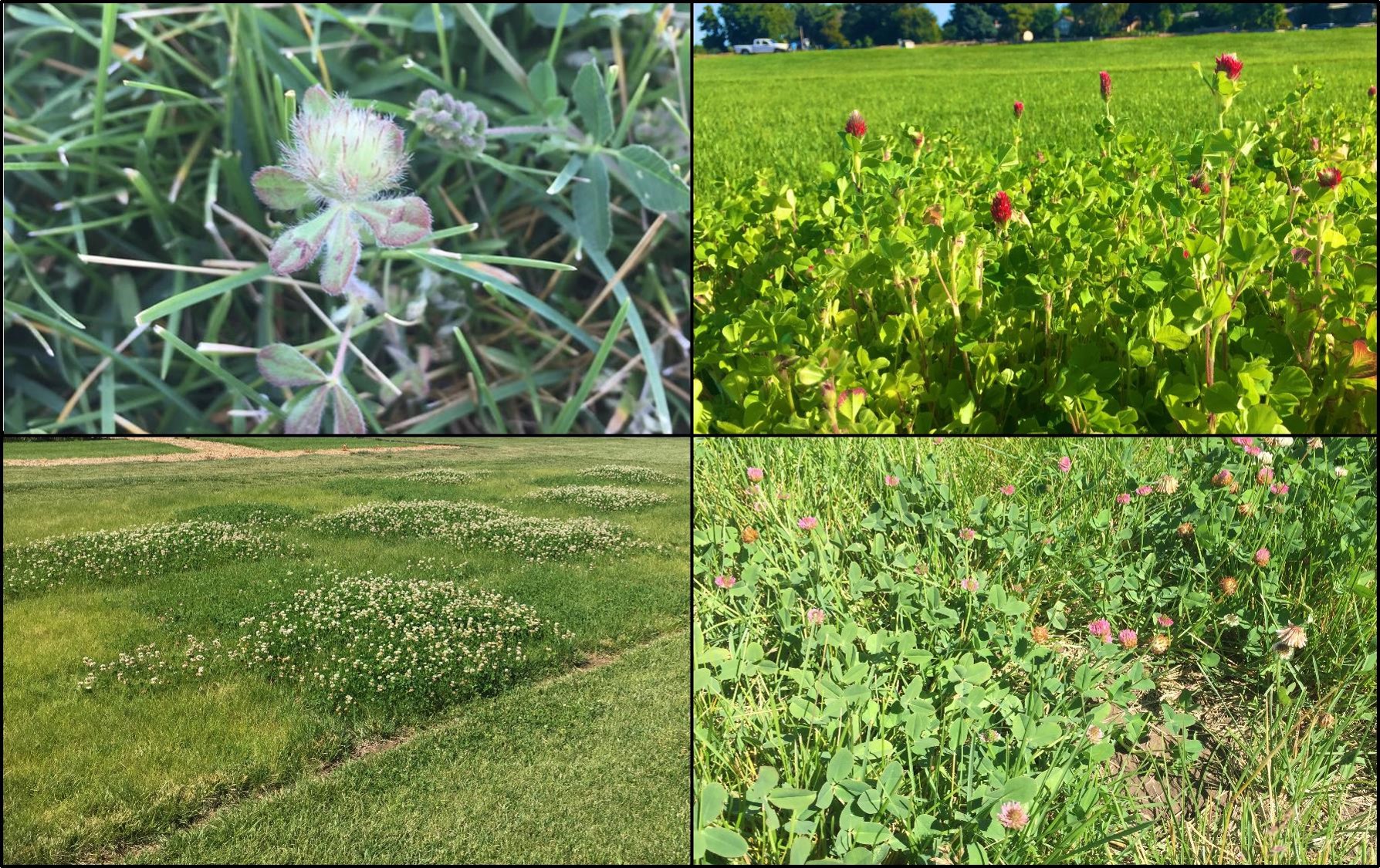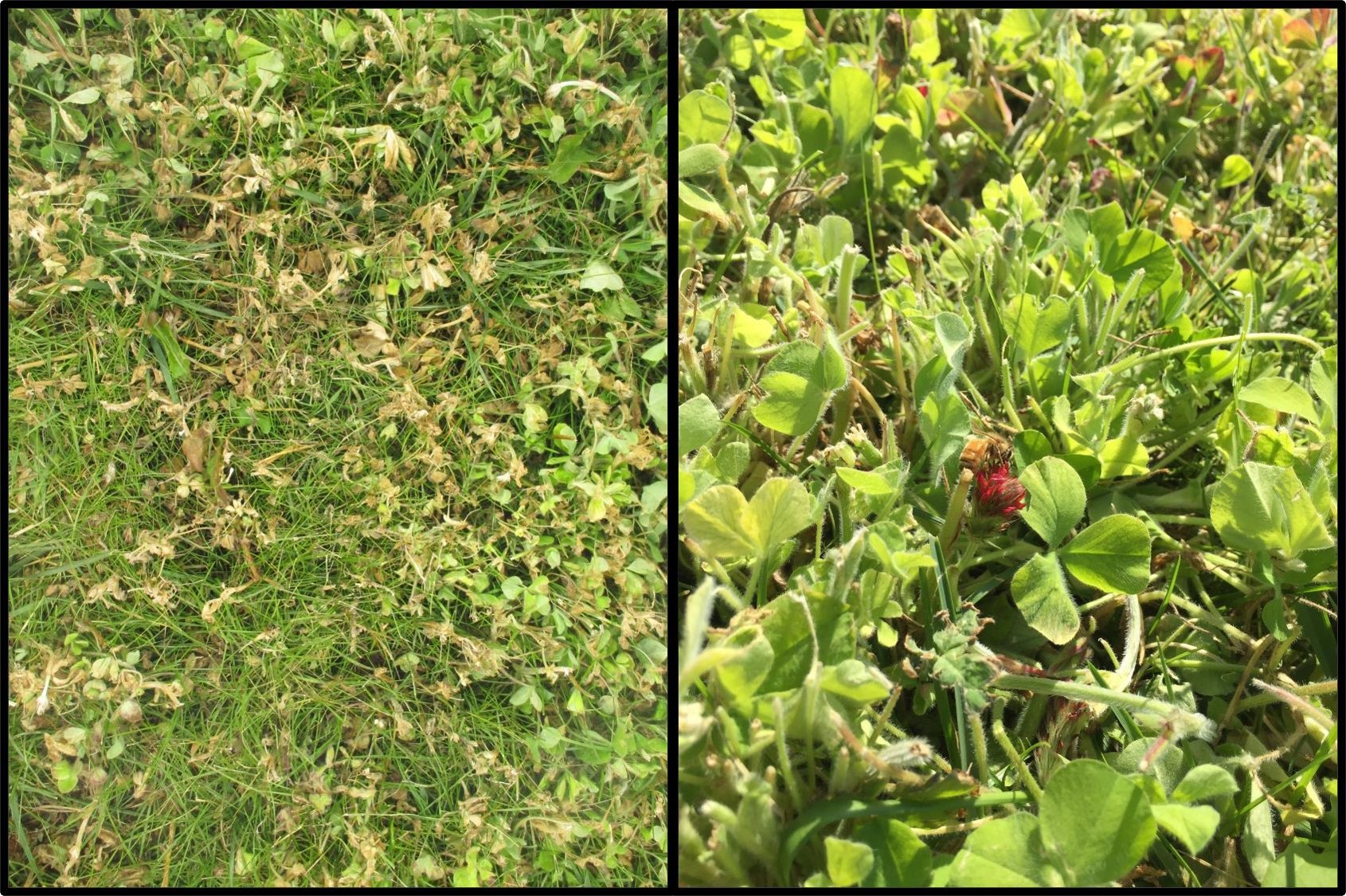By Paige Boyle
For many years, white clover (Trifolium repens) has been the go-to for adding flowering resources into lawns, and with good reason. White clover is a perennial, has a broad geographic range, can grow in both warm- and cool-season lawns, handles mowing well, and produces an abundance of flowers to provide pollinator forage (both pollen and nectar) in bee lawns. As a bonus, because white clover is a legume, it also adds nitrogen into the soil, resulting in less need for fertilizer applications. But are there other clover options for use in home lawns?
That was the question driving my recent PhD research at Utah State University. There are many species and varieties of clover, each with different environmental and management tolerances, growth habits, colors, and textures that could be of interest for use in home lawns. Most are strictly used as forage, pasture, or cover crops currently, and have not been studied or tested for this specific use. Other than white clover, we know that strawberry clover (Trifolium fragiferum) can grow well in cool-season lawns in the northwestern US and in warm-season lawns in southern states. Kura clover (Trifolium ambiguum) and berseem clover (Trifolium alexandrinum) have also been shown to persist in lawn mixtures.

One goal of this new research was to see if other clovers could persist in a lawn setting when grown with Kentucky bluegrass, while providing a quality (dense, green, and uniform) lawn, compared to Kentucky bluegrass grown alone (Figure 1). We tested perennial white and strawberry clovers, as well as crimson clover (Trifolium incarnatum), and rose clover (Trifolium hirtum), two annual clovers used more in range and forage settings. All four clovers established and persisted over a fall season when planted into bare soil with Kentucky bluegrass, and all four clover/Kentucky bluegrass mixtures maintained similar or better quality than Kentucky bluegrass grown alone, regardless of whether they were unfertilized or fertilized with 1 lb of nitrogen per 1000 sq. ft. in the fall.

Anecdotally, white and strawberry clovers bloomed profusely (Figure 2), while the more spring-blooming crimson and rose clovers were less prolific bloomers over the fall season. Whether the two annuals persist into the spring, and how overseeding or management practices would need to change to allow these clovers to persist over time is still unknown. Crimson clover also doesn’t mow particularly well; it shreds and browns quickly after mowing before bouncing back a few days later with more green growth and a few new, but small, flowers (Figure 3). Rose clover’s color, a sort of grayish blue green, with the occasional red-to-purple coloring (Figure 2), doesn’t blend well with the dark green of most turfgrasses, although it is striking and could add visual interest to a lawn.

There is no one-size-fits-all approach to diversifying your lawn. More research is needed to determine which non-grassy plants are suitable for lawn mixtures, the potential benefits different plants can convey to a lawn, the range of suitability for different mixtures, and best management practices for establishing and maintaining different types of mixed lawns.
This research was supported by the Utah Agricultural Experiment Station and the Center for Water Efficient Landscaping, Utah State University.